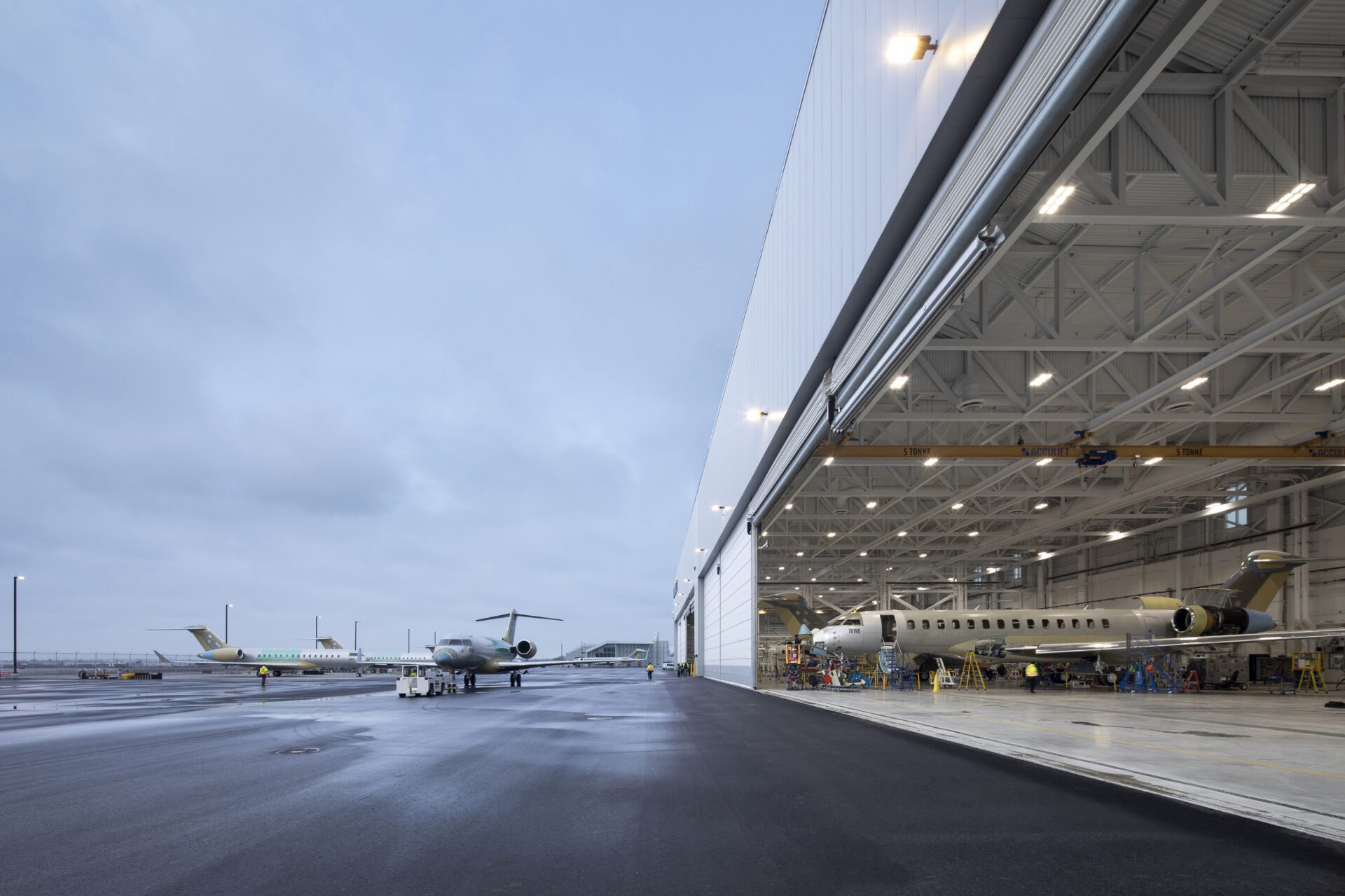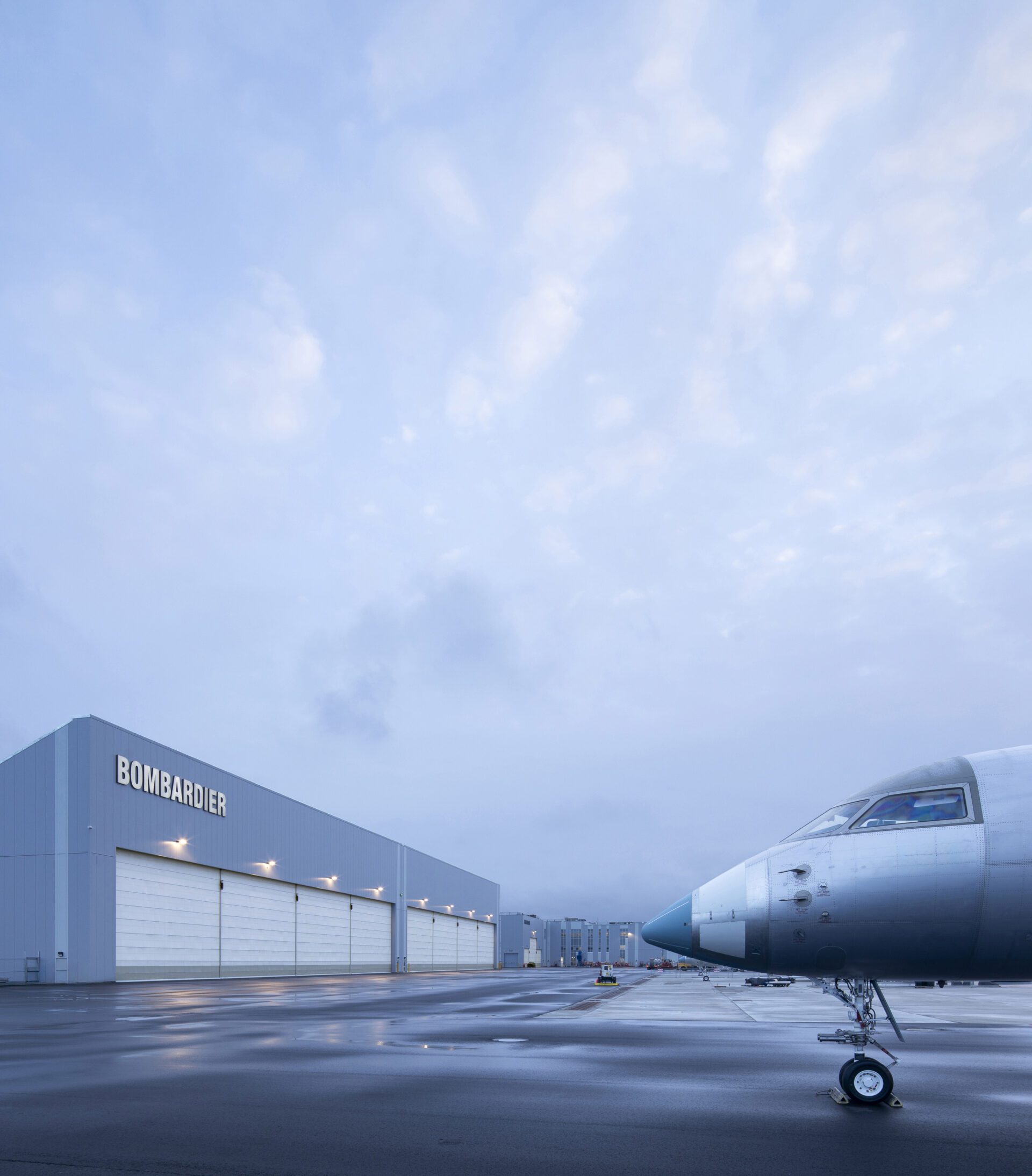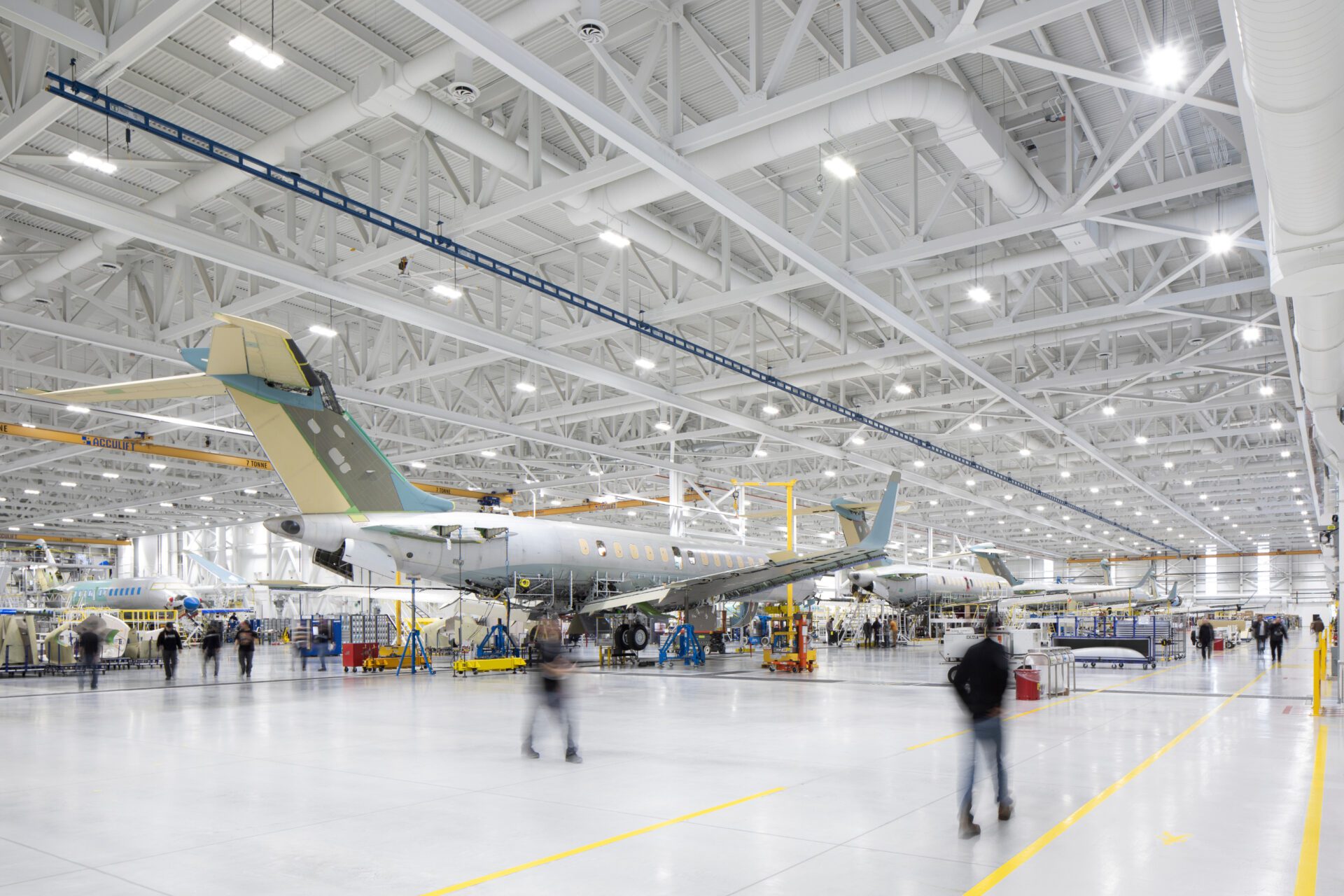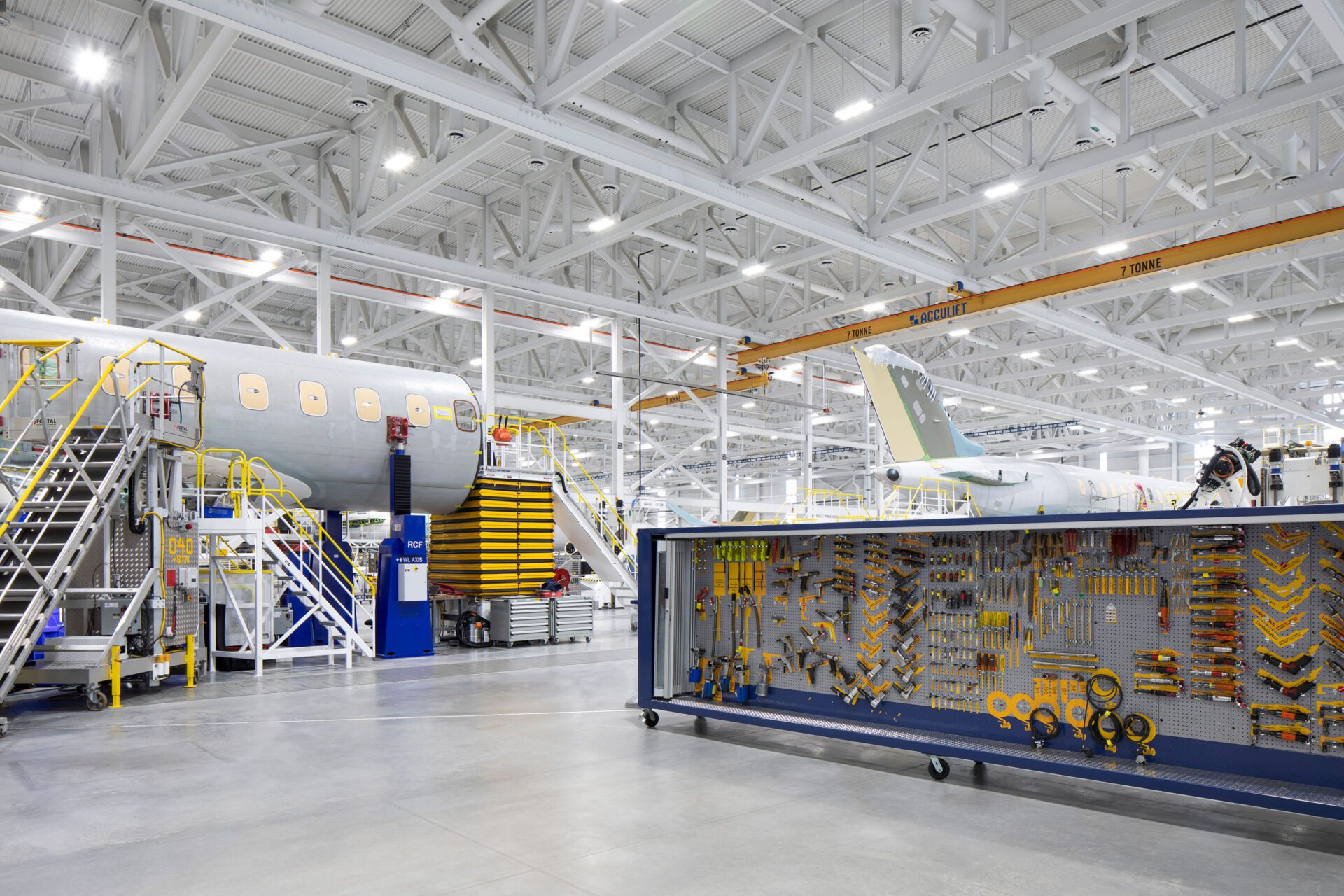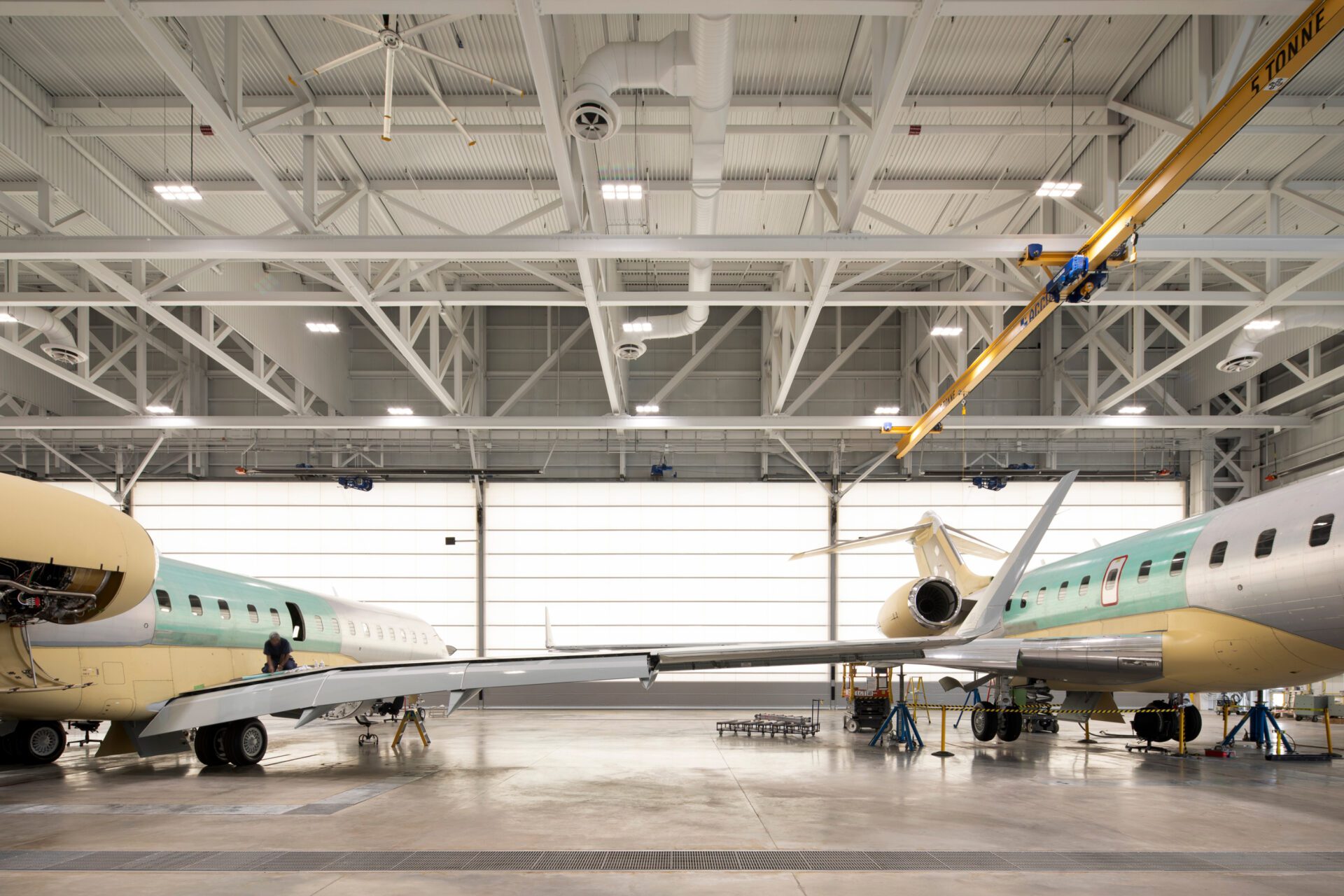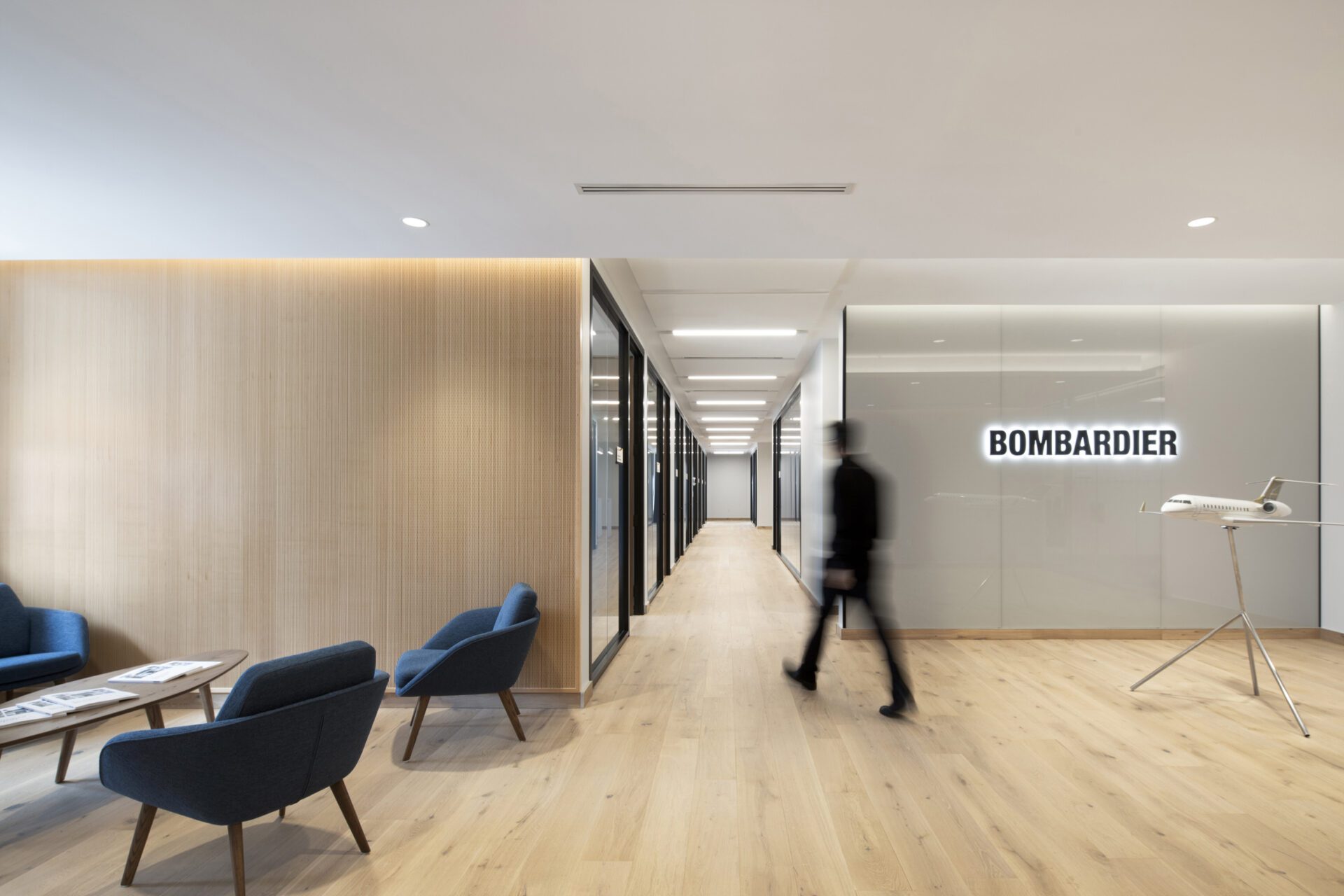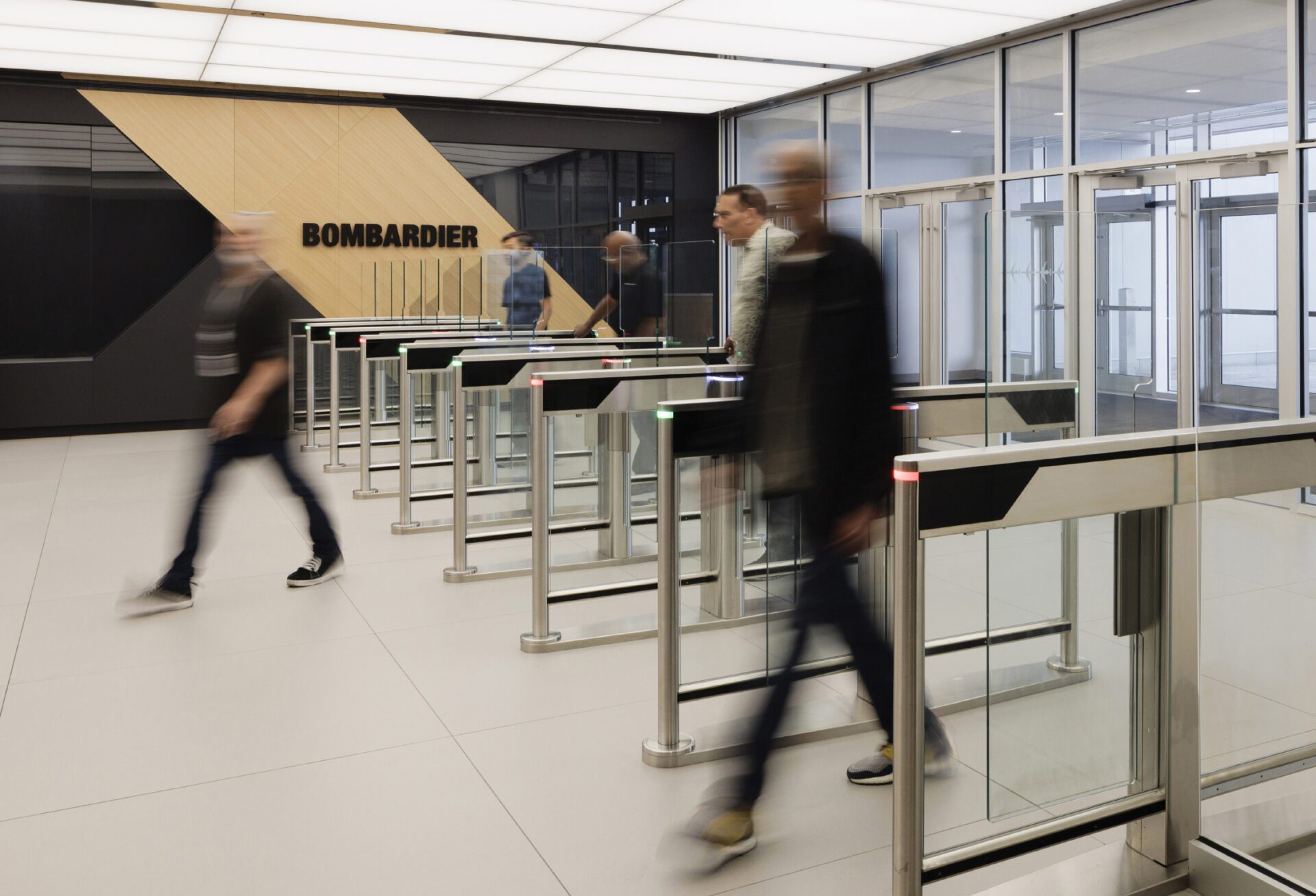Bombardier Aircraft Assembly Centre
NEUF architect(e)s


Short description
Creating a manufacturing facility for aircraft presents a unique architectural challenge—one that combines cutting-edge technology, precision engineering, and rigorous safety protocols. Bombardier’s new campus at Toronto Pearson International Airport masterfully addresses this challenge, reimagining not just a building, but an entire operational paradigm through innovative design, advanced materials, and sustainable strategies.
The project relocates Bombardier’s historic 366-acre Downsview facility to a compact, irregular 41-acre site adjacent to Canada’s busiest runway, demanding a complete rethinking of the site strategy. Two principal buildings—a manufacturing facility and a flight test hangar—support Bombardier’s Global line of business jets, serving both government and private clients.
At the heart of the campus, the 60,000 m² facility is the largest standalone structure built at Pearson in over two decades. A 75-metre clear span creates an uninterrupted production floor that accommodates 16 work centres, enabling the simultaneous assembly of over a dozen aircraft by 2,000 employees. Complementing the manufacturing space are a 10,600 m² flight test hangar, engineering offices, simulation suites, and training labs.
From the outset, collaboration shaped the design: engineers and production crews share integrated workstations to enable real-time problem-solving and foster human connection. The production floor is bathed in natural light, reinforcing the openness and spatial clarity rarely seen in industrial environments. The campus also includes classrooms for Centennial College, supporting both day-to-day operations and the development of future aerospace talent.
The building’s façades feature a rhythmic composition of barcode-like strips in translucent polycarbonate, optimizing daylight penetration while mitigating solar gain. As a result, 88% of workstations benefit from natural light—significantly enhancing occupant well-being and reducing reliance on artificial lighting. Beyond daylighting, more than 50% of the campus’s energy requirements are met through renewable sources, reinforcing Bombardier’s commitment to environmental innovation.
Entry details
